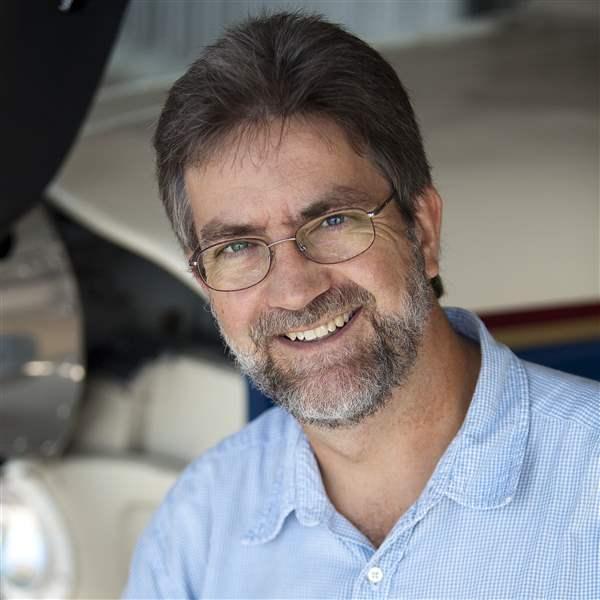Glimpse the future
But expanding your horizons doesn't have to mean launching into an intensive training program. It can be as simple as flying to a nearby town for a pancake breakfast, or just going to the airport for an airshow.
I had a chance to expand my horizons recently when I flew to Oshkosh, Wisconsin, with some coworkers to attend the Experimental Aircraft Association's annual AirVenture. The weeklong fly-in convention drew an estimated 770,000 people, and brought more than 10,000 aircraft to Wittman Regional Airport in Oshkosh and surrounding airports.
It wasn't the variety of airplanes that caught my attention, however. What intrigued me was a glimpse of the future offered by the airplane we flew to Wisconsin. The Beech Bonanza was equipped with a cellular telephone, specially designed and approved for use in flight, that could be used to download ground-based weather radar images and display them on the color screen of a personal digital assistant (PDA). The rig was small, lightweight, and it provided a weather radar capability to an aircraft that did not have on-board weather radar. Such a radar would be heavy, expensive, more difficult to use, and limited in its capabilities anyway.
Although I had seen demonstrations of similar products, this was the first opportunity I'd had to actually use one on a cross-country flight. In both directions it proved invaluable, helping us to avoid the thunderstorms that were thriving in the moist summer skies. Nexrad-based weather radar images were available anywhere we had AirCell phone service, and the images that it downloaded were only minutes old. On the trip out we were able to monitor a line of storms that moved across our destination airport and then dissipated, although one stubborn cell persisted, right on our route of flight. Our radar image allowed us to not only avoid the weather, but also when we radioed Flight Watch for weather updates, we were able to ask much more informed questions.
The weather briefing for our flight home included a line of precipitation in northeastern Ohio. Again, we were able to monitor its development while our flight progressed. By the time we caught up to the line, it was building pretty rapidly, and its south end was right over Pittsburgh. The radar information helped us to plan a deviation that kept us well clear. This technology has the potential to really improve the safety of our flying, and I can't wait to see it make its way into some of the airplanes that I rent.
If your horizons are in need of expanding, maybe you'll be able to join us at AOPA Expo 2003, which will be held in Philadelphia from October 30 through November 1. Datalink weather systems will be among the offerings of some 500 exhibitors. Expo offers some special treats for student pilots, newly certificated pilots, and flight instructors.
If you're a fan of Rod Machado's monthly "Since You Asked" column, you're guaranteed to enjoy any of his four Expo presentations: Defensive Flying, October 30 at 3 p.m.; Handling In-flight Emergencies, October 31 at 4:30 p.m.; Pilots, Poets, Psychologists-Strategies for Better Cockpit Thinking, November 1 at noon; and Aviation Humor-How it Helps, November 1 at 3 p.m. Machado, who also writes a monthly column in our sister magazine, AOPA Pilot, is a flight instructor, author, aviation educator, and humorist whose seminars are standing-room-only, not-to-be-missed events.
Also on the schedule is Greg Brown, whose monthly "Flying Carpet" column can be found in these pages. He'll present Stories from the Flying Carpet October 30 at noon. Brown is also a flight instructor and prolific author who recently published his fourth aviation title.
Speaking of flight instructors, AOPA Flight Training is planning its first CFI Roundtable for Philadelphia. Any instructor planning to attend Expo is welcome to e-mail me for the exact time and location of the meeting. We'd love to have you join us.
Guests can choose from among 80 hours of seminars that will be presented at Expo, on subjects ranging from proficient flying and safety to medical certification issues and aircraft ownership. Learn how you can practice talking to air traffic control on your computer, or find out how you can fly yourself to the Bahamas. For more information on AOPA Expo, see the Web site or call toll-free 888/GO2-EXPO (888/462-3976).
AOPA Expo can be counted on each year to expand your horizons. If you can't make Expo, don't overlook your horizons-opportunities surround us.



